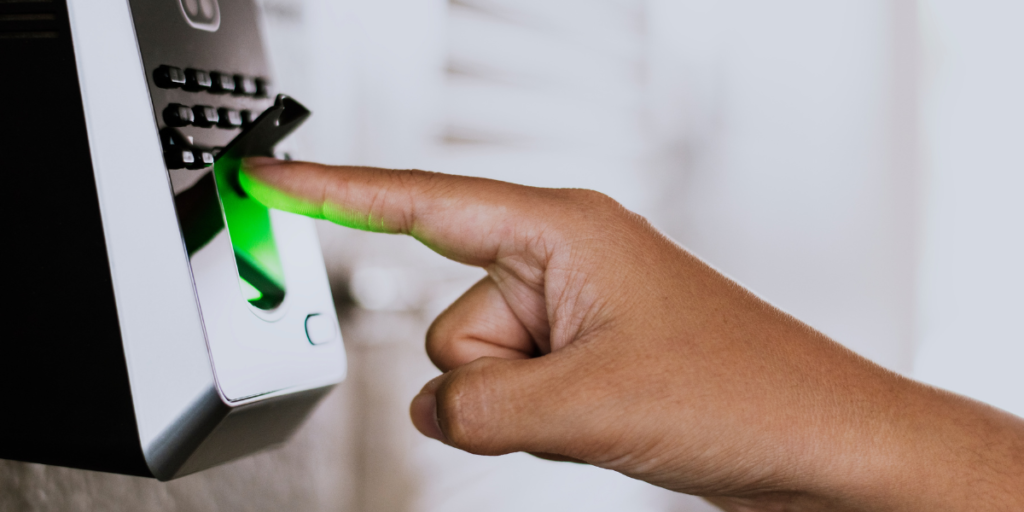
Physical Access Control: What Every New Business Should Know
How secure is your new business’s headquarters? As entrepreneurs, we often focus on cyber threats but forget that physical breaches can be just as devastating. This is where a robust physical access control system (PACS) comes into play. Whether it’s protecting against theft or ensuring that only the right eyes have access to sensitive information, PACS is not merely a lock on your door—it’s a strategic fortress in a landscape where security is pivotal to success. Let’s unlock the world of PACS and discover its critical role in contemporary business protection.
Learn More About Our Commercial Security Solutions!
What Is Physical Access Control and Why is it Important?
Physical access control systems manage and restrict access to a property, building, or room to authorized persons. It serves as a crucial component of commercial security, ensuring that both tangible and intangible assets are well-protected against unauthorized access.
For businesses, physical access control is not just a layer of security; it’s the backbone of a comprehensive security strategy that forms the barrier between potential threats and your business’s assets and personnel. It assists businesses in enforcing security policies and can be instrumental in complying with industry regulations and standards. With physical access control, you guard against not only theft and vandalism, but also corporate espionage, maintaining the integrity of classified information.
Benefits of Implementing a Robust Access Control System
A thoughtfully implemented access control system provides multiple benefits.
– Protection Against Unauthorized Access: Keeps unauthorized individuals out, safeguarding your premises.
– Enhanced Security for Sensitive Areas: Additional layers of security for areas requiring extra protection.
– Boosted Employee Safety: Creates a safer working environment by controlling access.
– Real-Time Tracking: Monitors who is entering and exiting your facility in real time.
– Streamlined Management and Oversight: Simplifies security management by integrating with other systems for comprehensive coverage.
Components of an Access Control System
An effective access control system includes several key components:
Access Points
Strategically positioned to control both entrance and exit at sensitive points within a structure, access points include advanced locks on doors, turnstiles for controlled personnel flow, and secure gate mechanisms for vehicle entry. They serve as the frontline defense, physically preventing unauthorized access and ensuring that only permitted individuals or vehicles can pass through security checkpoints.
Identifying Personal Credentials
The key to physical access control is verifying an individual’s identity and determining their access rights. Security practices have evolved over the years from traditional ID badges to innovative technologies such as mobile device-based access, PINs, encrypted smart badges, biometric verification, and automated vehicle identification systems for comprehensive access control.
Readers
Acting as the interpreters of the credentialing language, readers are responsible for capturing the data presented by the credential—whether it be a PIN code entered on a keypad, a magnetic card swipe, or a biometric read—and conveying this information to the control panel for further action. Positioned at access points, these devices are critical in transforming an individual’s credentials into actionable data that can gate access.

The control panel component validates credentials, granting or denying access based on authenticity.
Control Panel
At the heart of the decision-making process, this component receives input from readers and assesses the authenticity and authorization of the presented credentials. Upon validation, it initiates an action to unlock the designated barrier, permitting entry. Conversely, invalid credentials result in access denial, hence enforcing the security parameters set for the facility.
Access Control Server
The administrative cornerstone and capable of residing in physical on-premises hardware or within a cloud-based infrastructure, the server performs the pivotal role of managing user databases, access permissions, and detailed audit logs. Recording all system activity, it offers administrators comprehensive reports on access events, empowering them to monitor successful, attempted, and unauthorized entries effectively.
Different Types of Access Control
The primary types of access control include:
– Discretionary Access Control (DAC): Allows the owner the discretion to decide who can access certain locations.
– Mandatory Access Control (MAC): Access rights are regulated based on authorized clearances.
– Role-Based Access Control (RBAC): Access permissions are assigned based on the role of an individual within an organization.
How to Integrate Physical Access Control into Your Larger Security Structure
Effective integration of physical access control into your broader security framework involves coordinating with video surveillance to enhance visibility and accountability. It also requires careful consideration of cabling and network setups to ensure consistent, reliable service. Centralized security management tools help maintain a cohesive overview of security operations.
Leveraging Expertise for Your Access Control Needs
Leverage LLV’s expertise for your access control needs to secure your business’s assets and workforce. As a leader in innovative security solutions, LLV provides comprehensive services from consultation to installation and beyond, all tailored to meet your unique challenges. With LLV, you benefit from advanced access control systems designed to establish a secure and efficient operational environment. Don’t compromise on security. Schedule a consultation with LLV today and invest in cutting-edge protection measures to ensure your business’s future is secure.

